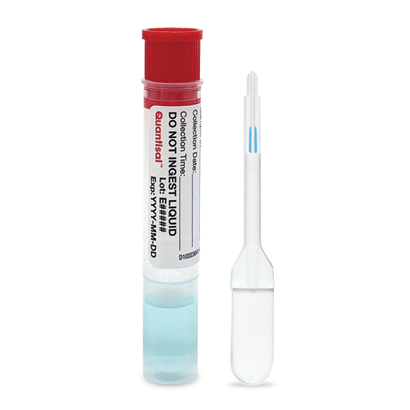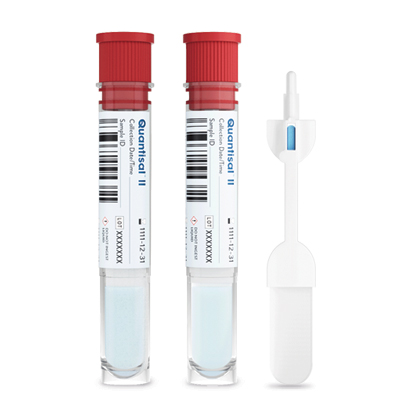TOXICOLOGY
The Value of Oral Fluid Testing
Oral fluid, like urine, is a common sample type for the detection of illegal and prescription drugs. With an observed collection process and relevant results due to a short window of detection, oral fluid has become an increasingly popular choice for testing.

Why drug test with oral fluid?
Oral fluid offers several advantages over urine testing, such as:
Collect samples anywhere, protecting against specimen tampering or adulteration
Excellent indication of recent drug use with parent drugs present in higher concentration than metabolites1
Non-invasive, gender-neutral specimen collections
Quick and Reliable Results
Oral fluid testing is performed on high-throughput, automated chemistry analyzers to provide a quick turn-around time. This can be crucial for employers and laboratories needing timely information.
Applicability to Various Testing Programs
Oral fluid testing is suitable for both non-regulated non-Department of Transportation (DOT) and regulated DOT drug testing programs, offering flexibility and compliance with regulatory standards.
Non-regulated and Regulated testing programs
When choosing the test sample, it is important to establish the purpose and intent of the testing program.
NON-REGULATED
A non-DOT drug testing program is typically implemented by employers as part of a workplace screening program or by laboratories looking to mirror DOT mandated cutoffs.
Examples include:
- Pre-employment screening, post-accident screening
- Drug treatment, pain management
REGULATED
Regulated drug testing programs follow strict guidelines and are required to meet federal standards for employment testing in federally approved laboratories ensuring consistency and reliability in results.
Examples include:
- DOT
- Substance Abuse and Mental Health Services (SAMHSA)
- Other federal agencies
What does an oral fluid drug test detect?
The available testing menus differ between non-regulated and regulated testing programs.
Non-Regulated
- 6-Acetylmorphine
- (+)-Amphetamines
- Barbiturates
- Benzodiazepines
- Buprenorphine
- Cannabinoids
- Cocaine/Benzoylecgonine
- Ethyl Alcohol
- Hydrocodone
- Marijuana (THC)
- MDMA
- Methadone
- (+)-Methamphetamine
- Opiates
- Oxycodone
- Phencyclidine (PCP)
- Tramadol
Regulated
- 6-Acetylmorphine
- Amphetamines
- Benzoylecgonine
- Cannabinoids
- Hydrocodone
- MDMA
- Methamphetamine
- Opiates
- Oxycodone
- PCP
our solutions

Quantisal™ Oral Fluid Collection Device
The Quantisal™ Oral Fluid Collection Device is widely used for oral fluid drug testing in workplace or pain and addiction practice settings. It allows for a simple noninvasive observed collection to avoid issues with sample adulteration or donor privacy.
Features:
- Collects 1 mL +10% oral fluid
- Excellent indication of recent drug use1
- Extraction efficiencies
- No artificial stimulants
- Volume adequacy indicator
- Reduces specimen adulteration

Quantisal™ II Oral Fluid Collection Device
Quantisal™ II is the first commercially available oral fluid device with split specimen capabilities, offering you the simplicity of collecting two samples with a single device that meets SAMHSA2 and DOT3 guidelines.
All the Features of Quantisal™ plus:
- Simultaneous collection of A and B specimens
- Proprietary FDA 510(k) cleared device
References
- White, R, Moore, C. Detection of Drugs and Their Metabolites in Oral Fluid. Elsevier and RTI International, 2018
- Substance Abuse and Mental Health Services Administration (SAMHSA)
- Department of Transportation (DOT), Federal Aviation Administration, 14 CFR Part 120, Procedures for Transportation Workplace Drug and Alcohol Testing Programs: Addition of Oral Fluid Specimen Testing for Drugs, Federal Register Vol. 88 No. 84, May 02, 2023

